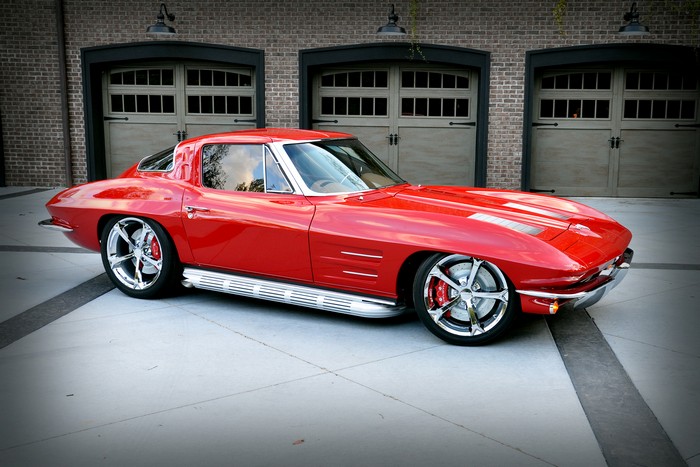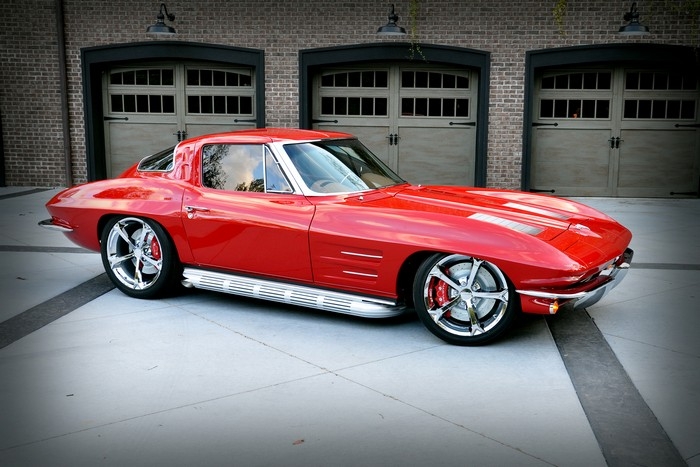
Completed in October 2012, a tribute to 50 years of the iconic 1963 Split-Window Corvette. An immaculate combination of original equipment and the latest in modern Corvette technology.
New chassis equipped with C5 front suspension and C6 rear. New from GM, 500-hp LS3 Cammer engine with new 5-speed Tremec transmission. New 6-piston ZR1 Corvette brakes, new 18-inch front and 19-inch rear Grand Sport wheels with new Nitto Invo tires.
GM power windows, power steering, power hood, AM/FM stereo and Vintage Air air conditioning. The modern equipment and technology make this icon a true pleasure to drive, with outstanding performance.
(Introductory description courtesy of Barrett-Jackson.)

